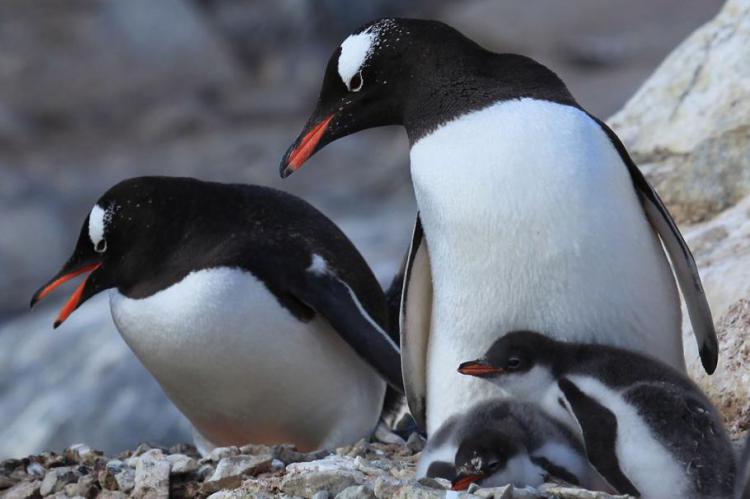Penguins thriving due to climate change?
Gentoo penguin numbers actually increasing
With melting ice increasing due to rising global temperatures, penguins are on the frontline of climate change. Scientists are finding penguins are beginning to feel major impacts from the drastic habitat changes. Surprisingly, not all the news is dire. The breeding populations of three brush-tailed species of penguins inhabiting the Western Antarctic Peninsula, where the temperatures are warmest, are not all decreasing.
"We know two of the three penguin species in the peninsula, chinstrap and Adélie, are declining significantly in a region where, in the last 60 years, it's warmed by 3 degrees C. (5 degrees F.) annually and by 5 degrees C. (9 degrees F.) in winter," said Ron Naveen, founder of Oceanites, a U.S. based non-profit and scientific research organization.
From November to February, Naveen’s team makes yearly repeated visits to the Antarctic Peninsula when egg laying and chick creching are at their peak. Since 1994, 1,421 visits have been conducted, with data collected from 209 sites.
Naveen and fellow penguin counter Heather Lynch of Stony Brook University say the warming climate and the consequent loss of sea ice are contributing to the decline in Adelie and chinstrap, as the two species are dependent on the ice. Adelies and chinstrap primarily nest near the ice, relying on krill as their primary food source. These shrimp-like vertebrates live underneath the ice, feeding on the algae that grows there. As the ice retreats, the krill disappear.
According to Naveen, warming temperature is only one part of the whole story. "There are a number of possibilities," he said. Commercial overfishing and expanding humpback whales population, which also feed on krill, may also contribute to the loss of their main food source.
In contrast, gentoo penguins are expanding both in numbers and in geographical range, according to Naveen and Lynch's research. Gentoos will eat anything and can adjust their life cycle more easily in response to variable conditions. If the snow melts early, they can breed earlier or relay their eggs.
There are an estimated 387,000 gentoo breeding pairs and their populations are moving southward along the peninsula."Gentoos are an open water species and can move southward as the declining ice concentration makes new habitat available to them," Lynch said.
The team's combination of fieldwork and remote sensing allowed them to get the first site-wide inventory of penguins at Deception Island. Monitoring penguin populations in the western Antarctic Peninsula, how they shrink and grow in response to changing conditions, not only provides critical clues to how to manage the environment, but perhaps for us as well. "Are they sending us a message we should be thinking about?" Naveen said. "Are we canaries in the coal mine?"





























